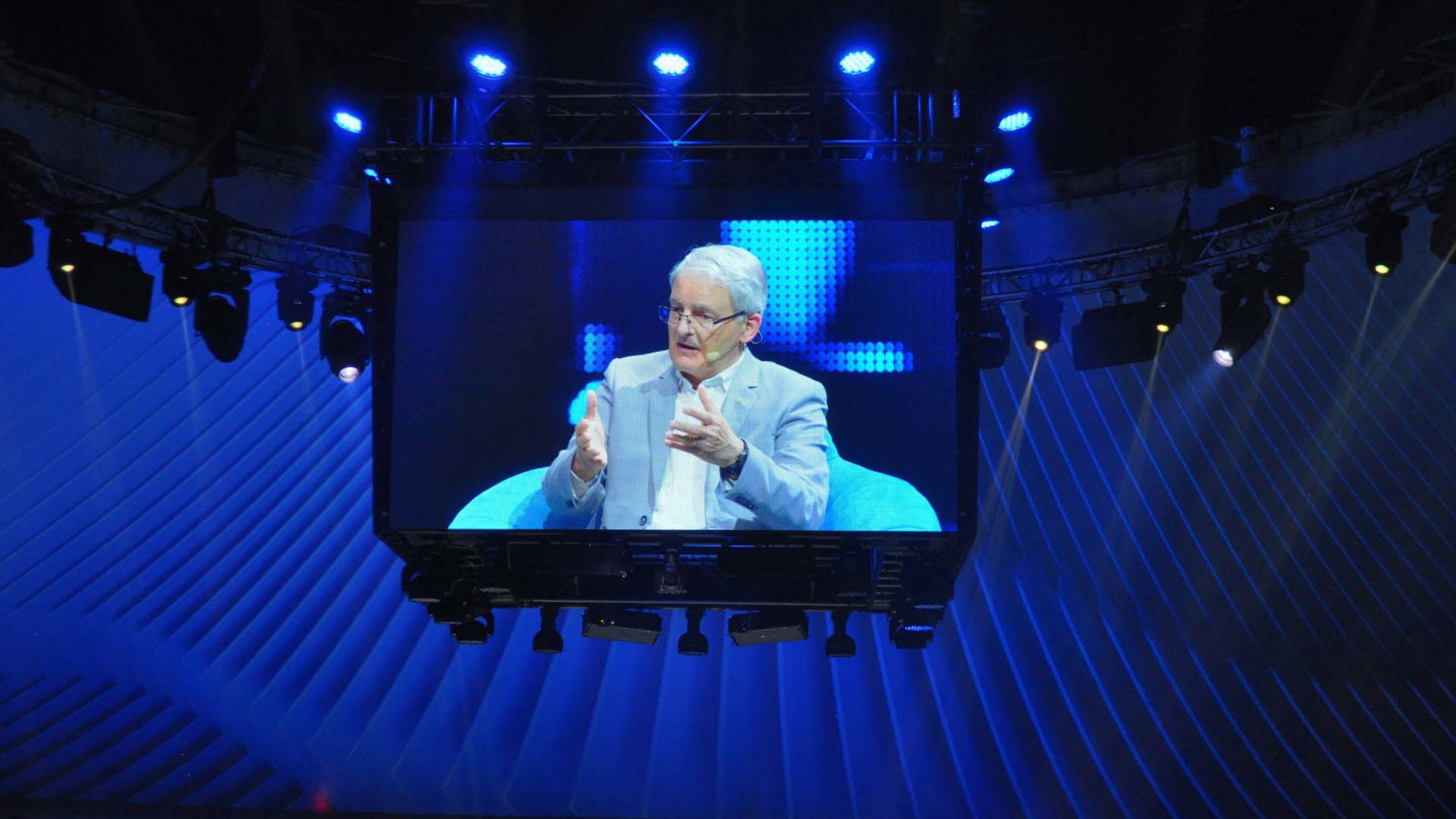MONTREAL – The more things change, the more they remain the same – it’s as true in the automotive world as elsewhere. At the massive Michelin Challenge Bibendum sustainable mobility gathering in Chengdu, China four years ago, the key role that governments play – through planning and regulation to accommodate and promote more advanced and efficient technologies – was underscored, in particular in relation to increasingly efficient, autonomous and electric vehicles in ever-denser cities.
Rebranded “Movin’ On by Michelin” last year, it’s now a more cross-functional technology conference. Participants from across various sectors gather to discuss and debate where future mobility is headed, in the hopes that these stakeholders with ties to private and public interest and investment could help overcome the logistic and legislative hurdles that can sometimes hinder the proliferation of cleaner technologies more than any technical or cost barrier.
The key role of governments as well as advanced infrastructure was again a major theme at this year’s Movin’ On global conference, which was particularly timely for many Canadian attendees during a week when the federal government announced an investment of $4.5 billion to buy the controversial Trans Mountain oil pipeline, and a week before a provincial election in Ontario, which currently offers the most generous government rebates (from $5,000 up to $14,000) for electric and hydrogen fuel cell vehicles. A week hence, and there’s a very clear possibility that the incoming PC majority government will eliminate these rebates.
Canada is one of the few G20 countries without a national purchase incentive on EVs, but Minister of Transport Marc Garneau said the government is actively encouraging all types of zero-emissions vehicles in its infrastructure planning: “One of the central elements will be the development of our zero-emissions vehicle strategy… which we expect to come out by the end of this year.”
Garneau wouldn’t specify how the potential elimination of EV rebates in Ontario would affect the federal government’s own plans on EV rebates or infrastructure, but did note that it had established a Zero Emissions Advisory Group in May 2017, and for the past year has received advice from many businesses and various levels of government on issues such as the paucity of zero-emissions vehicles and infrastructure, and how that affects range anxiety, as well as whether consumers were aware of the overall costs and potential savings involved with EV ownership, not just upfront costs.
He also stated that the Zero Emissions Vehicle Strategy coming out of the federal government would incorporate co-operative policies with the provinces. “We’re now in the process of working with the provinces and territories, because we can’t do it just federally – it’s a two level of government initiative.”

The federal government’s 2017 budget allocated $120 million for alternative fuelling stations including EV charging stations through Natural Resources Canada. Among other EV infrastructure plans, NRC has worked with Manitoba and Ontario to install quick-charging stations along a 3,000 km stretch of the Trans-Canada Highway along northern Ontario and Manitoba, where there is a lack of EV infrastructure, compared to major cities.
Cars and trucks are responsible for about 80 percent of the total 24 percent that transportation contributes to greenhouse gases in Canada, so there’s a big environmental opportunity for zero-emissions vehicles, noted Garneau.
Beyond the vehicles themselves, there’s a larger discussion regarding emerging technologies and policy, which are subject to the changing desires of governments and the people who elect them.
“Traditionally, we’ve designed cities around cars, and we’ve realized that this may not be the best way,” said Garneau, in a panel discussion on how technological changes in transportation will impact the daily life of urban populations. “Plus we’re thinking more about enhanced safety, clean technologies, and other features of cities that are becoming a higher priority.”
It’s those changes in society in parallel with technology that led Michelin to shift the focus of the event – from mostly Michelin and its automotive partners and suppliers, in Challenge Bibendum events that evaluated and ranked competing technologies – to helping take these technologies from the lab to the street, said Nicholas Beaumont, Michelin’s senior vice president of sustainable development and mobility.
“Right now, transportation is not sustainable,” said Beaumont. “It needs to be safe – it’s not, it’s killed 1.3 million per year. It’s not efficient, and we know today it’s not where it needs to be.”
But efficiency can’t just be about cutting back – without profit, there can be no further investment in research. The forum will return next year to Montreal as the Movin’ On Summit, but there will be ongoing communication throughout the year by conference members to encourage ongoing progress and goals, including how to make and keep profitable ideas, not just safer and greener ones.
“Economic growth is part of sustainability – if there’s no profit, it’s not sustainable,” said Beaumont. He points to Michelin’s sales of airplane tires: Previously, just like with passenger tires, they’d sell tires at a certain price per tire. Now, they sell airplane tires at based on price per landing, which incentivizes both airlines and Michelin to produce longer-lasting tires, instead of just selling more tires.

“Now, some people say, ‘Well, how can car companies be sustainable when they want to sell the most cars as possible?’” Beaumont asks rhetorically. “Just like with planes, the world is changing, and there will be new models of economic growth, which provides an economic incentive for cars to last longer and emit less.”
It’s similarly new ways of looking at sustainable growth that brought BMW Group’s head of Sustainability and Environmental Protection Ursula Mathar to the event again this year. Although BMW has been one of the most active manufacturers in terms of offering plug-in vehicles, she acknowledges the higher initial cost of those vehicles as well as the still-developing charging infrastructure in many places in Canada are barriers that still need to be overcome.
“It’s very human to be reluctant to change,” she said. She pointed to Ionity, a joint venture of a coalition of the major German automakers plus Ford, with plans to create 400 quick-charge stations in 24 countries by the end of 2020.
Her colleague Angela Konert, BMW US’s California and west coast governmental communications manager, said similar private networks are being established all over North America, although she couldn’t confirm whether the largest one – Volkswagen’s Electrify America – would expand outside of the US to include Canada.
Although she couldn’t speak to the Ontario government incentive program or its fate specifically, she did warn of the outcome in other jurisdictions that removed their electric vehicle sales incentives.
“An example of that was Georgia, and the market completely plunged to near zero,” she said. Similarly in BC, where the funding for all plug-in vehicle rebates (between $2,500 and $5,000) was exhausted by February 2014, and sales of EVs plummeted – especially mainstream-priced ones – before the rebate was reinstated in April 2017.
“In the Netherlands they took away the incentives for plug-in hybrids, and the market for plug in hybrid vehicles actually crashed – the intention was that people would adopt fully electric vehicles, but they found that they went back to internal combustion engines.”
For Audi’s vice president of sustainability Dr. Peter Tropschuh, even though he said at the event that the upcoming e-tron SUV will be Audi’s most important debut this year, and that the company plans to bring many more electrified and alternative-fuel vehicles to market in the next seven years, the internal combustion engine isn’t going away any time soon.
“In 2025, we want 800,000 electrified vehicles for sale,” Tropschuh said in an interview. “But that’s still roughly only one-third of our planned vehicles – for the other two-thirds, we need other improvements in efficiency.”





